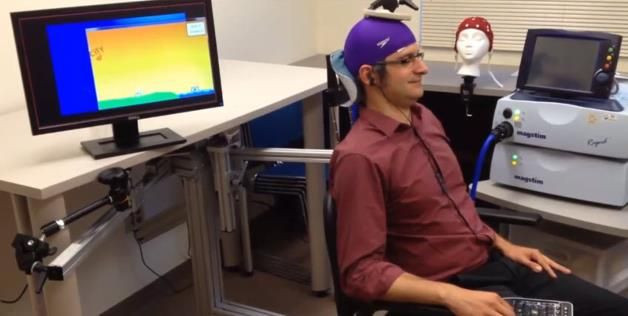Mind Control Is (Kind Of) Upon Us: Brain-To-Brain Interface Allows Scientist To Control Colleague's Finger Via Internet

Mind control is upon us… or, at least one step closer to being a reality. That’s because two scientists at the University of Washington were able to perform what they believe to be the first ever brain-to-brain interface, in which one of them was able to control the other’s finger movements via the internet while they sat on opposite ends of the school’s campus.
“The internet was a way to connect computers, and now it can be a way to connect brains,” Andrea Stocco, psychology professor at the university, said in a news release. “We want to take the knowledge of a brain and transmit it directly from brain to brain.”
Most of the research regarding brain-to-brain interfaces involves helping people who are paralyzed recover some of their lost motor functions. The new interface goes one step further than research earlier this year, in which Harvard scientists were able to make a rats tail move by focusing on a flickering pattern of light on a screen.
To test whether the interface would work in humans, Stocco’s colleague, Rajesh Rao, a computer science and engineering professor, wore an electrode cap attached to an electroencephalography (EEG) machine. He mentally played a simple computer game, and whenever he imagined his right hand moving to fire a cannon, impulses in his brain were registered in the EEG.
These impulses were then sent to a device called a transcranial magnetic stimulation (TMS) coil, which was secured above Stocco’s left motor cortex — the part of the brain that controls the right hand — by a swim cap. The impulses caused Stocco’s right index finger to involuntarily push the space bar on the computer in front of him, as if he was firing the cannon, Reuters reported.
“It was both exciting and eerie to watch an imagined action from my brain get translated into actual action by another brain,” Rao said in the release. “This was basically a one-way flow of information from my brain to his.” Stocco says the technology can be used in the future to help in situations that involve flying an airplane, for example. It could possibly help a passenger or flight attendant land after a pilot becomes debilitated.
Although many people may ask what’s next for this technology, with implications toward malicious animal or human mind control, both Stocco and Rao say there’s nothing to worry about, because it only reads certain kinds of simple brain signals. It doesn’t read thoughts and it doesn’t give someone absolute control over anything — the person on the receiving end can use willpower to counteract an impulse.
“I think some people will be unnerved by this because they will overestimate the technology,” Chantel Prat, assistant professor in psychology at the university, said in the release. “There’s no possible way the technology that we have could be used on a person unknowingly or without their willing participation.”
You can see the experiment in action right here:
Published by Medicaldaily.com



























